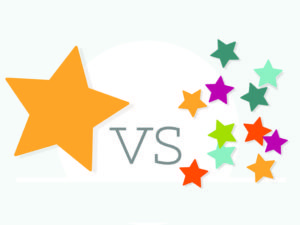Kerri Milesk is Chief People Officer at MTM, a medical and transportation management company with nearly 4,000 team members providing services across 31+ states to nearly 14M members. In her nearly 20 years of experience, Kerri has expertise in building high performing teams, strategic planning, corporate compliance, employee relations, operations, and integrations. Here, she discusses how MTM is supporting talent development and the overall employee experience.
What’s something new you or your team is focused on in 2023?
This year we’ve been leaning heavily into talent management and succession planning across the organization at every level. We are focusing on our mid-level leadership layers: If you’re a supervisor, manager, or director and you think you want to be promoted, who would you recommend to take your place? How are you preparing them? Do they even want to do your role?
For that to happen, our managers need to meet with their employees regularly – are they giving feedback? Are we looking at the work they are producing? How are we growing their skills? If they aren’t performing, are we informing them and supporting them to improve?
18-24 months ago we started to create our own version of the traditional “9 box” with names like “top talent, “key player” or “inconsistent player” rather than numbers. As we assess team members across these boxes, for anyone falling on the left side we always ask why? Do they need a development plan? Have they been given accurate feedback? Maybe someone is sitting in a box they shouldn’t be or maybe they are in the wrong role.
During our Fall 2022 Talent Assessment we spent a lot of time on helping managers communicate which box one of their direct reports sits in and why. Helping people lay out those conversations can be very different person to person and is something we’re still working on. We want these conversations to be meaningful, specific and productive so individuals have a clear picture of what they can improve upon or continue doing.
With these assessments in place, we’re now able to start talking about succession at C-Level, VPs and Sr. Director levels. We can engage those leaders to identify a successor and, for those who don’t have one, get their help to close that gap. We’ve been pleasantly surprised with how well adopted this priority has become with our leaders.
What’s your organization’s remote work policy?
Our contact center and other remote eligible employees are all fully remote with a couple of exceptions for contracts that require our employees to be in an office. We also have our St. Louis headquarters and encourage team members to come in 1-2 days per week. We don’t enforce it and haven’t had the need to. People tend to like the flexible environment and the balance of seeing co-workers and still getting to work from home.
We know the benefits of remote work. What are your top 3 challenges with it so far?
From a contact center perspective, we’re doing very well with performance management through tracking SLAs and KPIs. Before going remote, leaders were sitting right next to or near their teams and could glance up to observe the work being done and how it was accomplished, etc.
Management by walking around just doesn’t exist anymore in a virtual environment. It’s important to have your daily, weekly, monthly check-ins and 1:1s with employees and ask questions differently. You’ve also got to be more sensitive to boundaries and how different work preferences intersect. Work has to get done, deadlines must be achieved, and people must engaged with each other. How that is done becomes more important when we can’t be face to face with each other. For example, you may like working late at night but not everyone does or can. Scheduling emails, calls and meetings to happen within “normal” work hours is a respectful consideration that needs more attention in a virtual environment.
Building relationships is also more difficult. It’s why we require cameras to be on for team meetings and why we are intentional about bringing people together in-person every so often. For example, our Executive Leadership Team meets in-person every month for 1-2 days. Our Operations teams come together quarterly and many local teams are in the office at least one day a week together.
What’s different about Employee Experience in 2023?
We’ve always had great feedback about our onboarding (often the best a new hire has experienced!), but how do we convert that into a virtual environment and still achieve the same outcome?
We have one FTE that is solely focused on onboarding who takes the 90-day schedule for training, meeting other teams, learning about the organization, etc. and ensures it is effectively translated to a virtual experience. We invest a lot of time in onboarding from across the organization so every employee gets broad exposure to MTM’s people, process, and purpose.
That said, there is still no substitute for in-person and we are intentional about bringing people together. It’s especially important when working through larger strategic items to collaborate and get to know each other. And because of virtual, we also are intentional about getting together regularly to ensure new employees have the opportunity to meet team members and cross-functional partners sooner rather than later. These connections are imperative to maintaining our culture and helping people work together in the most effective way.
MTM is busier than ever and we’ve been encouraging our team members to create boundaries. In a virtual environment it’s very easy to be constantly working and not taking the appropriate breaks and/or time off to refresh and recharge. If you’re at home and get up to use the bathroom or get a beverage refill, you don’t run into people on the way and stop for a quick chat like you would in the office. Its important for both mental and physical health to get up and move throughout the day.
How do you build a thriving culture in a virtual environment?
About 95% of our contact center employees are all over the country and work from home 100% of the time – their environment is entirely virtual.
Creating connections is important and to do so we expect cameras to be on for meetings, for teams to have daily standups, and leverage solutions like Bonfyre to help drive relationships and collaboration activities.
We also lean into initiatives like our DEI-based book club (200 members) and a virtual annual talent show (300-400 log in) – it’s been so amazing to see different sides of our team members and have them share and showcase personal talents. During the pandemic, we had teams doing virtual happy hours and lunches. As many have returned to the office a few days a week, we are seeing lunches happen in person and not as frequent in the virtual environment.
It’s also so critical for any technology we use to be easy and embedded in the flow of work which, for us, is Microsoft Teams. That’s one of the reasons we love Bonfyre and Culture Coach – it’s fully integrated with Microsoft Teams and makes it easy for our team members to take engagement actions that drive collaboration, relationships, and performance without having to go somewhere else.
How is your organization leveraging engagement surveys today?
We do quarterly engagement surveys. At the close of each survey, we digest all of the data and communicate to the organization the successes and the areas we are focusing on for improvement. People leaders also automatically receive their team’s survey results along with analysis of any high and low scores.
What is the post-survey action planning process like at your organization?
Anyone that has a lower result – participation or overall score – is asked to create an action plan which our HR team will partner with them to develop. Usually when a leader does an action plan and focuses on it, they will see improvement.
Action plan adoption and completion begins and ends with how important engagement scores are to the organization. At MTM, engagement scores are a KPI at every level – from quarterly board reports to department and individual manager performance reviews
because we cross reference and validate engagement scores’ connection with other business outcomes like retention and performance.









